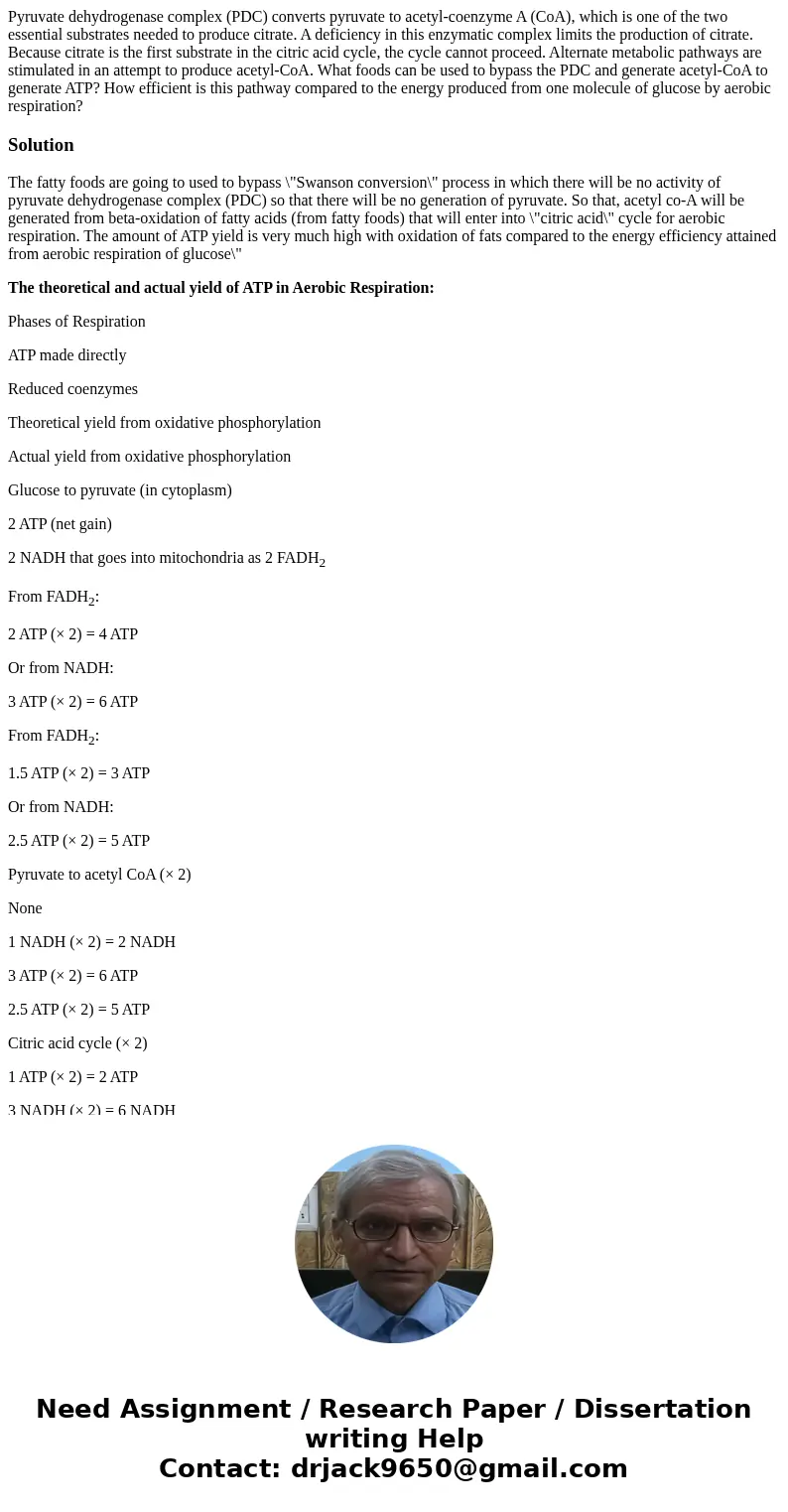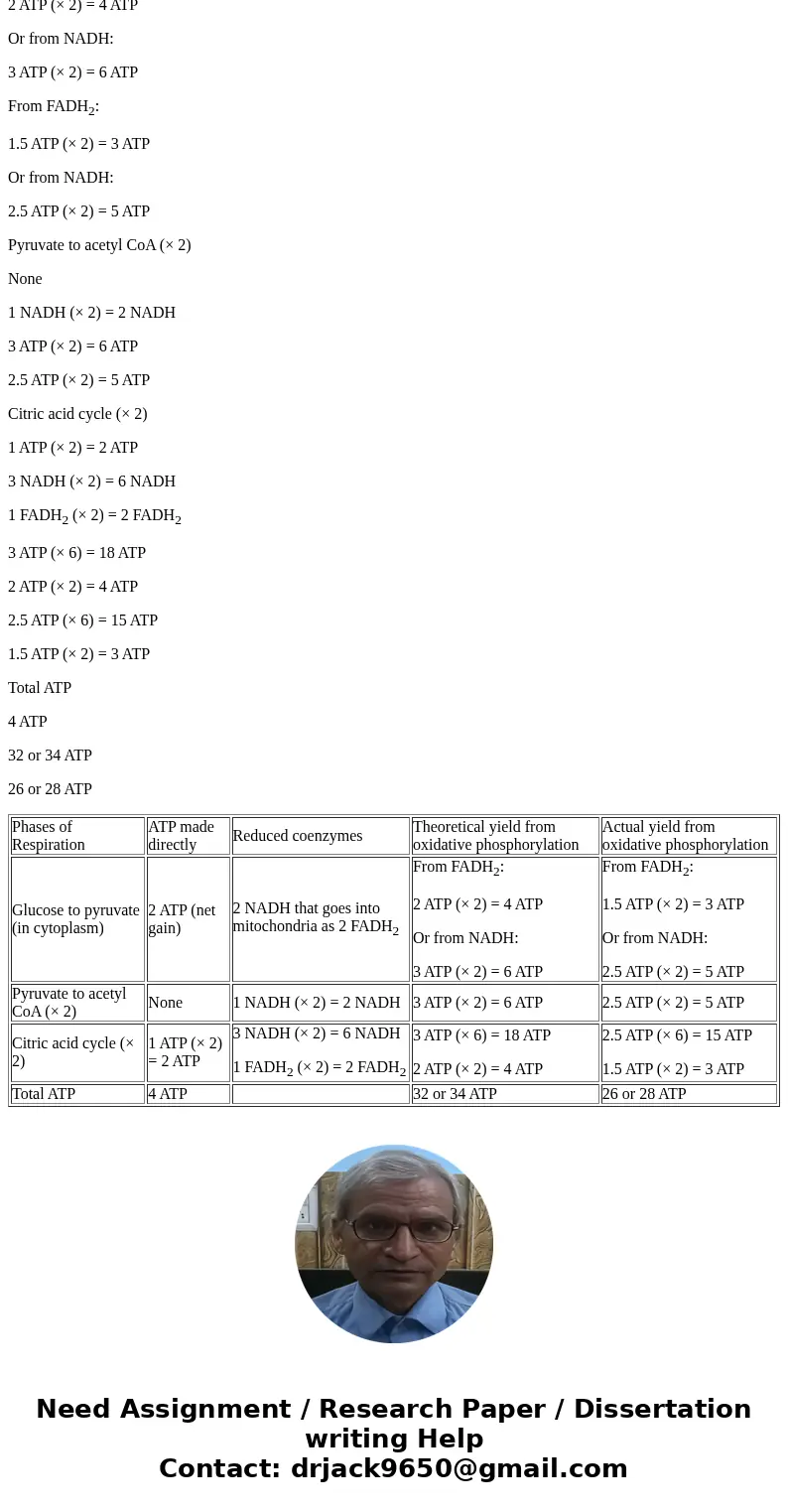Pyruvate dehydrogenase complex PDC converts pyruvate to acet
Solution
The fatty foods are going to used to bypass \"Swanson conversion\" process in which there will be no activity of pyruvate dehydrogenase complex (PDC) so that there will be no generation of pyruvate. So that, acetyl co-A will be generated from beta-oxidation of fatty acids (from fatty foods) that will enter into \"citric acid\" cycle for aerobic respiration. The amount of ATP yield is very much high with oxidation of fats compared to the energy efficiency attained from aerobic respiration of glucose\"
The theoretical and actual yield of ATP in Aerobic Respiration:
Phases of Respiration
ATP made directly
Reduced coenzymes
Theoretical yield from oxidative phosphorylation
Actual yield from oxidative phosphorylation
Glucose to pyruvate (in cytoplasm)
2 ATP (net gain)
2 NADH that goes into mitochondria as 2 FADH2
From FADH2:
2 ATP (× 2) = 4 ATP
Or from NADH:
3 ATP (× 2) = 6 ATP
From FADH2:
1.5 ATP (× 2) = 3 ATP
Or from NADH:
2.5 ATP (× 2) = 5 ATP
Pyruvate to acetyl CoA (× 2)
None
1 NADH (× 2) = 2 NADH
3 ATP (× 2) = 6 ATP
2.5 ATP (× 2) = 5 ATP
Citric acid cycle (× 2)
1 ATP (× 2) = 2 ATP
3 NADH (× 2) = 6 NADH
1 FADH2 (× 2) = 2 FADH2
3 ATP (× 6) = 18 ATP
2 ATP (× 2) = 4 ATP
2.5 ATP (× 6) = 15 ATP
1.5 ATP (× 2) = 3 ATP
Total ATP
4 ATP
32 or 34 ATP
26 or 28 ATP
| Phases of Respiration | ATP made directly | Reduced coenzymes | Theoretical yield from oxidative phosphorylation | Actual yield from oxidative phosphorylation |
| Glucose to pyruvate (in cytoplasm) | 2 ATP (net gain) | 2 NADH that goes into mitochondria as 2 FADH2 | From FADH2: 2 ATP (× 2) = 4 ATP Or from NADH: 3 ATP (× 2) = 6 ATP | From FADH2: 1.5 ATP (× 2) = 3 ATP Or from NADH: 2.5 ATP (× 2) = 5 ATP |
| Pyruvate to acetyl CoA (× 2) | None | 1 NADH (× 2) = 2 NADH | 3 ATP (× 2) = 6 ATP | 2.5 ATP (× 2) = 5 ATP |
| Citric acid cycle (× 2) | 1 ATP (× 2) = 2 ATP | 3 NADH (× 2) = 6 NADH 1 FADH2 (× 2) = 2 FADH2 | 3 ATP (× 6) = 18 ATP 2 ATP (× 2) = 4 ATP | 2.5 ATP (× 6) = 15 ATP 1.5 ATP (× 2) = 3 ATP |
| Total ATP | 4 ATP | 32 or 34 ATP | 26 or 28 ATP |


 Homework Sourse
Homework Sourse